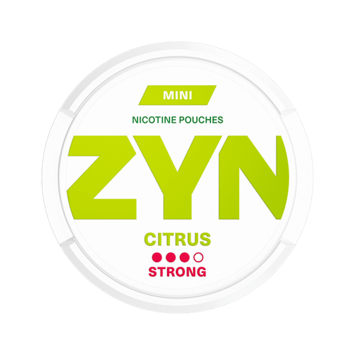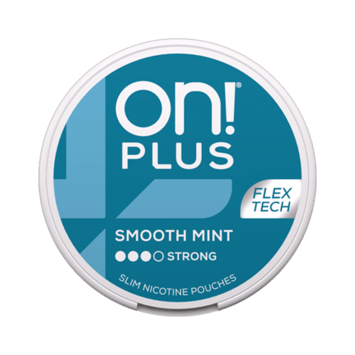nicotine pouches pros and cons
Philip Plainstein

Nicotine pouches are small, convenient bags containing nicotine and other ingredients, marketed as a safer alternative to smoking and chewing tobacco. Brands like On!, Zyn, and Velo offer these products, aiming to provide a less harmful option for those seeking to reduce their tobacco use.
This guide explores the benefits and drawbacks of nicotine pouches, helping you understand their role in modern nicotine consumption. You’ll learn about their composition, potential health impacts, and how they compare to traditional nicotine products.
Key points include:
- What nicotine pouches are and their ingredients
- Their presentation as a safer alternative to smoking
- Pros and cons, including side effects and health considerations
- Comparisons with other nicotine products
- Insights from research and expert recommendations
For more details on how nicotine pouches function, visit our guide to understand their mechanism and effects better.
Understanding Nicotine Pouches
Nicotine pouches are innovative, smoke-free products designed to deliver nicotine in a discreet manner. They are small, white sachets placed between the upper lip and gum, offering a modern alternative to traditional tobacco products.
What Are Nicotine Pouches?
These pouches are made of soft, breathable material and contain a mix of nicotine, water, flavourings, sweeteners, and plant-based fibres. Unlike chewing tobacco or snus, they do not include any tobacco leaves, making them a distinct option for those seeking to reduce their tobacco intake.
How They Work and Their Key Ingredients
When placed between the lip and gum, the pouch releases nicotine, which is absorbed through the mouth’s mucous membranes. The presence of water and sweeteners enhances the flavour and comfort. Flavourings come in various options, from mint to fruit, catering to different preferences. The plant-based fibres provide structure to the pouch, ensuring a consistent release of nicotine.
Their popularity stems from their convenience and discreet use. Unlike cigarettes, they produce no smoke or vapour, making them ideal for public settings. However, as with any nicotine product, potential side effects like a tingling sensation or dizziness may occur, especially for new users.
For more insights into how nicotine pouches function and their effects, visit our guide to explore their mechanism and benefits in detail.
Examining the Benefits of Nicotine Pouches
Nicotine pouches offer several advantages that make them a popular choice for those seeking alternatives to traditional tobacco products. Their innovative design and discreet use set them apart from other methods of nicotine consumption.
Safer alternative to smoking and dipping
Research suggests that nicotine pouches expose users to fewer harmful chemicals compared to combustible tobacco products. This reduction in exposure can lower the risks associated with smoking and dipping. Studies indicate that using these pouches may lead to better health outcomes, making them a more attractive option for those looking to reduce their tobacco intake.
Discreet use and portability
One of the key benefits of nicotine pouches is their portability. They can be used conveniently in various settings without drawing attention, which is a significant advantage for many users. The ease of use and unobtrusive form factor make them an ideal choice for discreet nicotine consumption.
Additionally, the controlled delivery method ensures a consistent release of nicotine, which can help manage cravings effectively. This feature, combined with the reduced exposure to harmful chemicals, makes nicotine pouches a compelling option for those seeking a safer and more convenient form of nicotine intake.
Exploring the Drawbacks of Nicotine Pouches
While nicotine pouches offer convenience and a modern alternative to traditional tobacco products, they are not without their drawbacks. This section delves into the potential health risks and long-term concerns associated with their use.
Health Risks and Side Effects
One of the primary concerns with nicotine pouches is their impact on oral health. Users have reported side effects such as gum irritation, sore mouth, and in some cases, hiccups or nausea. These issues can be uncomfortable and may deter some individuals from using the product. Additionally, the direct contact of the pouches with the mouth can lead to prolonged exposure to nicotine, potentially causing discomfort for new users.
Research indicates that the mouth is particularly vulnerable to irritation due to the way nicotine is absorbed through the mucous membranes. This absorption method, while effective for delivering nicotine, can also cause soreness in the mouth area. Furthermore, the lack of long-term studies on these products raises questions about their safety beyond the immediate side effects.
Addiction and Long-Term Concerns
Beyond the immediate health risks, there is a growing concern about the potential for addiction. Nicotine pouches deliver a controlled amount of nicotine, but improper use can lead to dependency. This risk is particularly concerning for young people, who may not fully understand the long-term implications of nicotine addiction. Studies suggest that early use of such products can lead to a lifetime of nicotine dependence.
Another critical issue is the lack of comprehensive research on the long-term effects of nicotine pouches. Unlike approved nicotine replacement therapies such as gum or patches, which have extensive data supporting their safety and efficacy, nicotine pouches have not undergone the same level of scrutiny. This gap in knowledge makes it difficult to assess their impact on overall health beyond the short term.
| Drawback | Details |
|---|---|
| Gum Irritation | Direct contact with the mouth can cause discomfort and soreness. |
| Mouth Soreness | Prolonged use can lead to irritation of the mucous membranes. |
| Addiction Risk | Improper use may result in nicotine dependency, particularly in young users. |
| Lack of Research | Insufficient long-term studies compared to approved therapies like gum or patches. |
In conclusion, while nicotine pouches offer a convenient and discreet way to consume nicotine, they come with significant drawbacks. The potential for mouth irritation, the risk of addiction, and the lack of comprehensive research make them a less-than-ideal choice for many users. As with any nicotine product, it is crucial to approach their use with caution and consult healthcare professionals before relying on them as a replacement therapy.
nicotine pouches pros and cons
Understanding the benefits and drawbacks of nicotine pouches is crucial for making informed decisions about their use. These products have gained popularity due to their unique characteristics, but it’s important to evaluate their place within the broader context of nicotine consumption.
Comparing Nicotine Pouches to Chewing Tobacco and Snus
Nicotine pouches differ significantly from traditional chewing tobacco and snus. Unlike these products, nicotine pouches do not contain tobacco leaves, which reduces exposure to certain harmful chemicals. However, debates persist regarding the levels of harmful chemicals they may still contain. Additionally, their appealing flavours and sleek packaging have raised concerns about attracting younger users.
Regulatory and Social Perspectives
From a regulatory standpoint, nicotine pouches are often viewed differently from vaping products. While vaping has faced intense scrutiny, nicotine pouches are seen as a more traditional form of nicotine delivery. Socially, they are perceived as a less disruptive option compared to vaping, as they produce no vapour or smoke. However, the variety of flavours available has sparked discussions about their potential appeal to non-smokers, particularly young people.
The long-term health implications of nicotine pouches remain a topic of debate. Compared to chewing tobacco and snus, they may expose users to fewer harmful chemicals, but the lack of extensive research means their safety profile is not yet fully understood. As regulatory frameworks evolve, nicotine pouches are likely to face increasing scrutiny, particularly in how they are marketed and distributed.
Alternatives and Nicotine Replacement Therapy Options
Exploring alternatives to nicotine pouches can provide a more tailored approach to managing cravings and reducing tobacco use. This section delves into established nicotine replacement therapies and vaping, offering insights into their unique benefits and challenges.
Nicotine Gum, Patches, and Lozenges
Nicotine gum, patches, and lozenges are well-known replacement therapies. They offer a controlled release of nicotine, helping users manage withdrawal symptoms. These methods are discreet and have been medically approved, making them a reliable choice for many. For instance, nicotine gum allows for gradual release through chewing, while patches provide a steady dose over time. Lozenges dissolve quickly, offering immediate relief. These options are particularly appealing to those who prefer a method with a proven track record of effectiveness.
Vaping as an Alternative Method
Vaping presents a different approach, offering customization and immediate satisfaction. E-cigarettes deliver nicotine through vapour, avoiding the chemical byproducts of combustion. This method is often preferred by those who find the experience closer to smoking. However, it requires maintenance, such as maintaining the device and choosing the right e-liquids. Vaping’s portability and variety of flavours make it a popular alternative, though it’s important to consider the long-term implications and regulatory guidelines.
In conclusion, whether opting for traditional therapies like gum or patches or exploring vaping, each method has its own set of advantages and considerations. By understanding these alternatives, individuals can make informed decisions that align with their lifestyle and needs.
Health Research, UK Regulations and Future Studies
Scientific studies and regulatory updates are shaping the future of smokeless tobacco products in the UK. While these products, such as snus and e-cigarettes, are considered less harmful than smoking, their long-term health impacts remain under scrutiny.
Current Scientific Findings and Studies
Research indicates that smokeless tobacco products like snus may expose users to fewer harmful chemicals compared to combustible tobacco. However, studies comparing these products to e-cigarettes highlight concerns about nicotine levels. Some smokeless tobacco products contain higher nicotine concentrations, which could lead to increased addiction risks.
UK Legal Framework and Recommendations
The UK is actively reviewing regulations for smokeless tobacco products to ensure public safety. The government has published evidence updates on vaping products, which provide insights into their safety and usage trends. For more information on these updates, visit the UK government’s vaping evidence update.
Continued research is essential to fill gaps in understanding the long-term effects of smokeless tobacco products. As studies emerge, regulatory measures may evolve to protect public health. Staying informed about these developments is crucial for users and policymakers alike.
Final Reflections on Your Nicotine Journey
As you reflect on your journey with nicotine products, it’s important to weigh the benefits and risks. While using nicotine pouches offers a discreet and convenient way to manage cravings, it’s crucial to consider potential issues like gum irritation and the risk of nicotine addiction.
If your goal is to quit smoking, nicotine pouches can be a useful tool, but they should be part of a broader strategy. Consider alternatives like vaping or traditional therapies, and always consult a healthcare professional for personalized advice.
Ultimately, informed decisions about your health are key. By understanding the pros and cons of nicotine pouches and exploring all options, you can create a plan that supports your long-term well-being and helps you achieve your goals.









